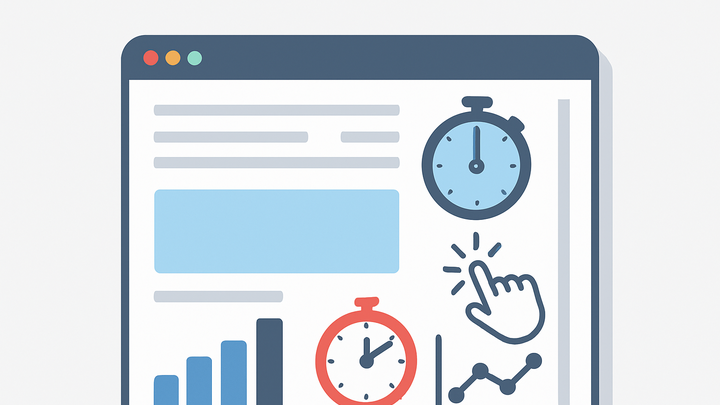Published on 2025-06-22T07:37:05Z
What is Engagement Depth? Examples and Best Practices
Engagement Depth is a comprehensive web analytics metric that measures how thoroughly visitors interact with your content. Rather than counting mere page views, it aggregates signals like:
- Time on page
- Scroll depth percentage
- Clicks and other interactive events
By combining these dimensions, engagement depth reflects not just if a user landed on a page, but how much they consumed and interacted with its content. High engagement depth typically correlates with better user satisfaction, lower bounce rates, and increased conversion potential. Analytics platforms such as PlainSignal and Google Analytics 4 (GA4) provide tools and events designed to track and analyze engagement depth effectively.
Engagement depth
Composite metric combining time on page, scroll depth, and interaction events to gauge how deeply users engage with content.
Understanding Engagement Depth
This section defines engagement depth, explains its core components, and why it matters in modern web analytics.
-
Core definition
Engagement depth is a weighted measure of how users interact with a page—capturing duration, scroll, and events rather than just views.
-
Business impact
Deeper engagement often signals stronger content relevance, leading to higher conversion rates and improved SEO performance.
Measuring Engagement Depth
Overview of the metrics and calculations used to derive an engagement depth score.
-
Key metrics
Typical inputs include time on page, percentage scroll depth, number of clicks or interactions, and video or form engagements.
-
Composite scoring
Each metric can be weighted (e.g., 50% time on page, 30% scroll depth, 20% interactions) to produce a unified engagement score.
Implementation with SaaS Tools
Practical examples for tracking engagement depth using PlainSignal and Google Analytics 4.
-
PlainSignal (cookie-free analytics)
Add PlainSignal to your site with the following code:
<link rel="preconnect" href="//eu.plainsignal.com/" crossorigin /><script defer data-do="yourwebsitedomain.com" data-id="0GQV1xmtzQQ" data-api="//eu.plainsignal.com" src="//cdn.plainsignal.com/plainsignal-min.js"></script>PlainSignal automatically captures time on page, scroll depth, and click events without cookies.
-
Automatic events
By default, PlainSignal tracks key interactions like scroll milestones and clicks without additional setup.
-
Custom event tracking
Configure bespoke engagement events (e.g., video plays) directly in the PlainSignal dashboard.
-
-
Google analytics 4
GA4 provides built-in engagement metrics such as engaged sessions, engagement rate, and scroll tracking. Install via gtag.js:
<script async src='https://www.googletagmanager.com/gtag/js?id=G-XXXXXXXXXX'></script> <script> window.dataLayer = window.dataLayer || []; function gtag(){dataLayer.push(arguments);} gtag('js', new Date()); gtag('config', 'G-XXXXXXXXXX', { 'send_page_view': true }); </script>-
Enhanced measurement
Enable Enhanced Measurement in GA4 to track scrolls, outbound clicks, and video engagements automatically.
-
Custom engagement events
Use gtag or Google Tag Manager to send bespoke engagement events like form submissions or quiz completions.
-
Improving Engagement Depth
Strategies to optimize your content and UX for deeper user engagement.
-
Structured content
Break articles into clear sections with headings and summaries to guide readers through longer content.
-
Interactive elements
Embed polls, quizzes, and interactive charts to invite user participation and increase session depth.
-
Personalization
Leverage user behavior data to surface relevant recommendations and dynamically adapt content.
